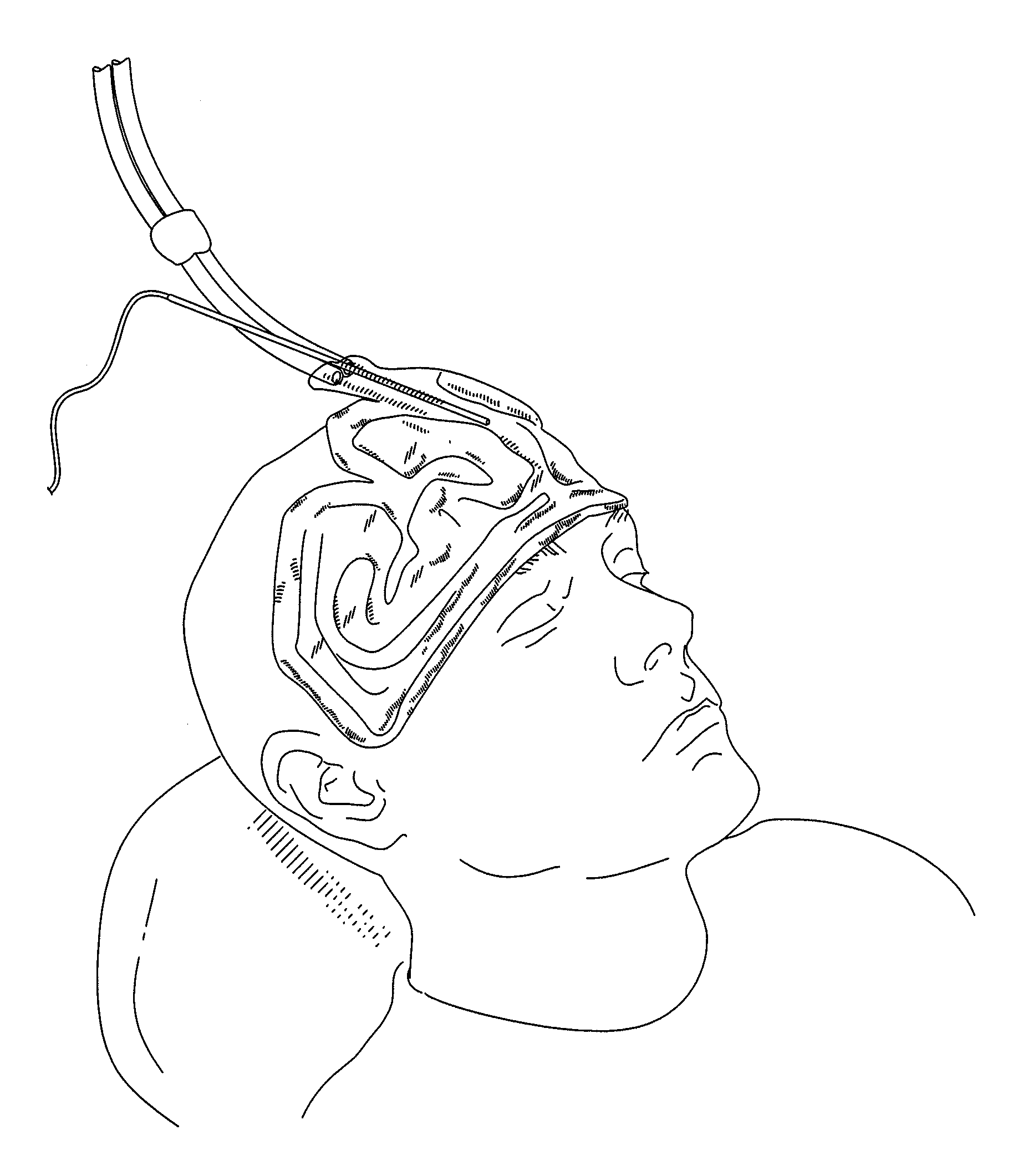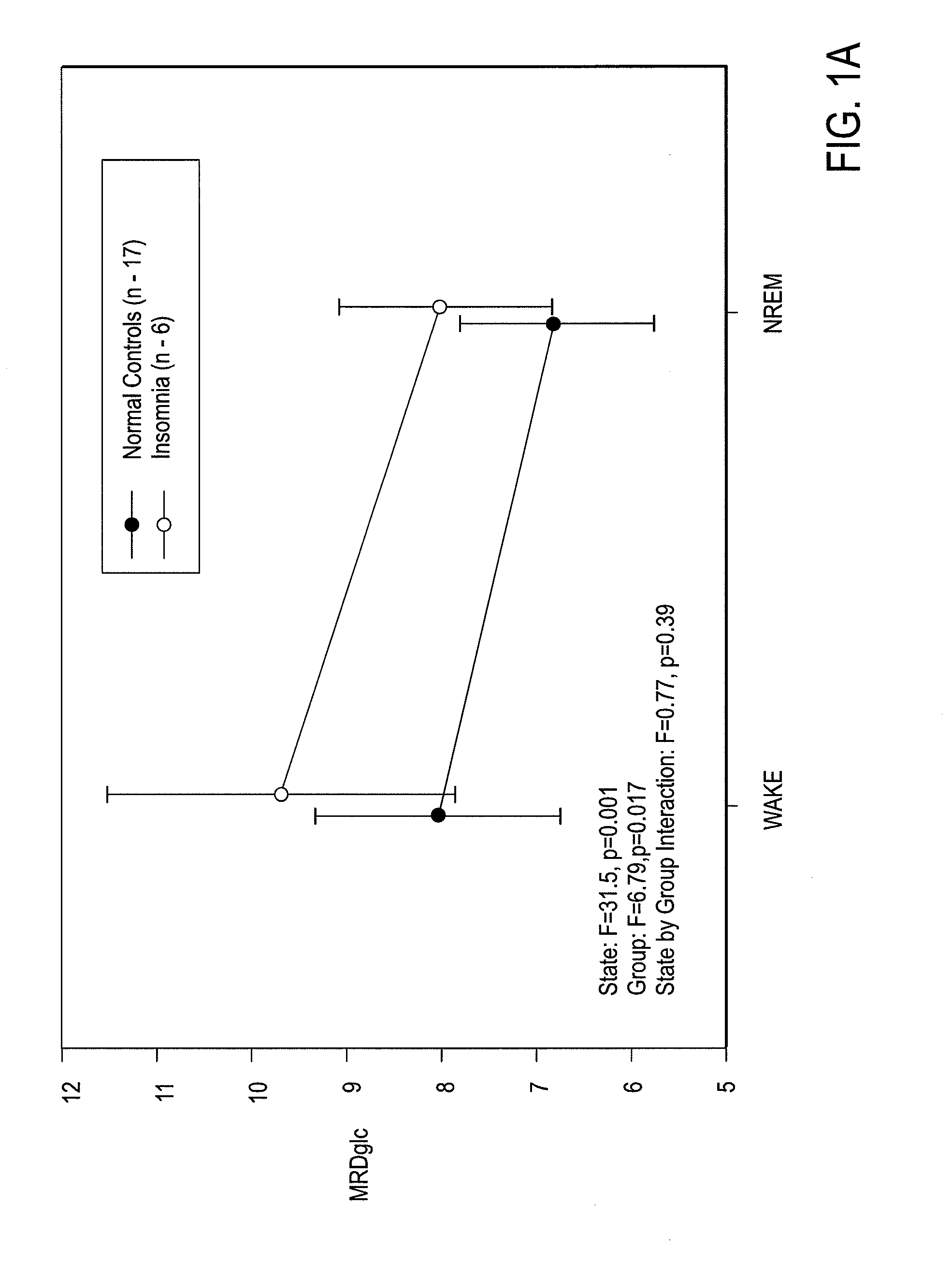Methods, devices and systems for treating insomnia by inducing frontal cerebral hypothermia
a frontal cerebral hypothermia and insomnia technology, applied in the field of insomnia treatment methods, devices and systems, can solve the problems of increased risk of mental health problems, health care costs, and economic burden of insomnia, and achieve the effects of improving drowsiness, convenient use, and comfortable and safe wear of devices
- Summary
- Abstract
- Description
- Claims
- Application Information
AI Technical Summary
Benefits of technology
Problems solved by technology
Method used
Image
Examples
Embodiment Construction
[0053]As describe above, it has been suggested that the restorative aspects of sleep can be linked regionally with heteromodal association cortex, especially in the frontal regions. The studies described herein clarify the regional cerebral metabolic correlates of this. In the first study, changes in regional cerebral metabolism that occur between waking and sleep in healthy subjects were identified. Fourteen healthy subjects (age range 21 to 49; 10 women and 4 men) underwent concurrent EEG sleep studies and [18F]fluoro-2-deoxy-D-glucose ([18F]-FDG) positron emission tomography (PET) scans during waking and NREM sleep. Whole brain glucose metabolism declined significantly from waking to NREM sleep. Relative decreases in regional metabolism from waking to NREM sleep were found in heteromodal frontal, parietal and temporal cortex, and in dorsomedial and anterior thalamus. These findings are consistent with a restorative role for NREM sleep largely in cortex that subserves essential ex...
PUM
 Login to View More
Login to View More Abstract
Description
Claims
Application Information
 Login to View More
Login to View More - R&D
- Intellectual Property
- Life Sciences
- Materials
- Tech Scout
- Unparalleled Data Quality
- Higher Quality Content
- 60% Fewer Hallucinations
Browse by: Latest US Patents, China's latest patents, Technical Efficacy Thesaurus, Application Domain, Technology Topic, Popular Technical Reports.
© 2025 PatSnap. All rights reserved.Legal|Privacy policy|Modern Slavery Act Transparency Statement|Sitemap|About US| Contact US: help@patsnap.com



